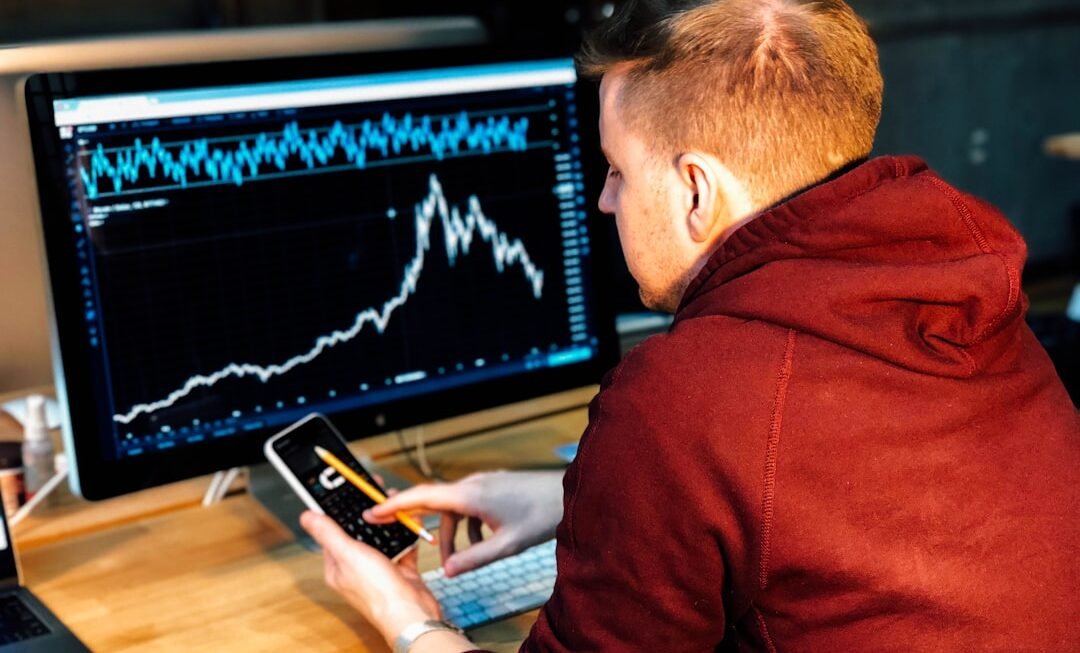The financial landscape has undergone a seismic shift with the advent of artificial intelligence (AI) and its integration into trading platforms. Over the past decade, the rise of AI-driven automated trading systems has transformed how traders and investors approach the markets. These platforms leverage sophisticated algorithms and machine learning techniques to analyze vast amounts of data, execute trades at lightning speed, and adapt to changing market conditions in real-time.
The increasing availability of high-frequency trading, coupled with advancements in computational power, has made it possible for these systems to operate with unprecedented efficiency and accuracy. As traditional trading methods become less effective in a rapidly evolving market environment, the demand for AI-driven solutions has surged. Institutional investors, hedge funds, and even retail traders are increasingly turning to automated trading platforms to gain a competitive edge.
The ability to process and analyze data at scale allows these systems to identify patterns and trends that human traders might overlook. This shift is not merely a trend; it represents a fundamental change in how trading is conducted, with AI becoming an integral part of the financial ecosystem.
Key Takeaways
- AI-driven automated trading platforms are on the rise, revolutionizing the financial markets with their advanced capabilities.
- Machine learning plays a crucial role in automated trading, enabling platforms to analyze data and make informed decisions.
- The benefits of using AI-driven automated trading platforms include increased efficiency, reduced human error, and the ability to analyze large amounts of data in real-time.
- AI has the potential to disrupt the financial industry by revolutionizing trading strategies and risk management.
- Integrating big data and AI in automated trading platforms can further enhance their capabilities and potential for disruption in the financial industry.
How AI is Revolutionizing the Financial Markets
Enhanced Market Insights
In contrast, AI algorithms can analyze vast datasets from multiple sources, including market data, news articles, social media sentiment, and economic indicators, to make informed trading decisions. This capability allows for a more nuanced understanding of market dynamics and enhances predictive accuracy.
Real-Time Adaptability
Moreover, AI-driven trading platforms can adapt to changing market conditions in real-time. For instance, during periods of high volatility or unexpected market events, these systems can quickly recalibrate their strategies based on new information.
Minimizing Errors and Maximizing Efficiency
This adaptability is crucial in today’s fast-paced financial environment, where delays in decision-making can lead to significant losses. By automating the trading process and minimizing human intervention, AI not only increases efficiency but also reduces the likelihood of costly errors that can arise from emotional trading or fatigue.
The Benefits of Using AI-Driven Automated Trading Platforms
The benefits of utilizing AI-driven automated trading platforms are manifold. One of the most significant advantages is the ability to execute trades at high speeds that are unattainable by human traders. In high-frequency trading scenarios, milliseconds can make a substantial difference in profitability.
AI algorithms can analyze market conditions and execute trades within microseconds, capitalizing on fleeting opportunities that would otherwise be missed. Additionally, these platforms offer enhanced risk management capabilities. By employing advanced analytics and predictive modeling, AI can assess potential risks associated with various trading strategies.
For example, an AI system can simulate different market scenarios to evaluate how a particular strategy would perform under various conditions. This proactive approach to risk management enables traders to make more informed decisions and adjust their strategies accordingly, ultimately leading to improved performance and reduced exposure to losses.
The Role of Machine Learning in Automated Trading
Machine learning (ML), a subset of AI, plays a pivotal role in the development and functionality of automated trading platforms. ML algorithms are designed to learn from historical data and improve their performance over time without explicit programming. In the context of trading, this means that ML models can identify complex patterns and relationships within vast datasets that may not be immediately apparent to human analysts.
For instance, a machine learning model might analyze years of stock price movements alongside macroeconomic indicators to uncover hidden correlations that could inform future trading decisions. As new data becomes available, the model continuously refines its predictions based on its learning from past outcomes. This iterative process enhances the model’s accuracy and adaptability, allowing it to respond effectively to changing market conditions.
Consequently, machine learning empowers traders with insights that can lead to more profitable strategies while minimizing risks.
The Future of Algorithmic Trading with AI
The future of algorithmic trading is poised for further transformation as AI technologies continue to evolve. As computational power increases and data availability expands, we can expect even more sophisticated algorithms capable of processing complex datasets in real-time. This evolution will likely lead to the emergence of hybrid models that combine traditional quantitative methods with advanced AI techniques, resulting in more robust trading strategies.
Moreover, the integration of natural language processing (NLP) into trading algorithms will enable platforms to analyze unstructured data sources such as news articles, earnings reports, and social media posts. By understanding sentiment and context within this data, AI-driven systems will be able to gauge market sentiment more accurately and make informed trading decisions based on public perception and emerging trends. This capability will further enhance the predictive power of algorithmic trading systems and solidify their role in shaping the future of financial markets.
Overcoming Challenges in Implementing AI-Driven Automated Trading Platforms
Despite the numerous advantages offered by AI-driven automated trading platforms, several challenges must be addressed for successful implementation. One significant hurdle is the need for high-quality data. The effectiveness of AI algorithms is heavily dependent on the quality and accuracy of the data they are trained on.
Inconsistent or erroneous data can lead to flawed predictions and suboptimal trading decisions. Therefore, ensuring access to reliable data sources is paramount for organizations looking to leverage AI in their trading strategies. Another challenge lies in the complexity of developing and maintaining these systems.
Building effective AI-driven trading algorithms requires expertise in both finance and technology. Organizations must invest in skilled personnel who understand machine learning principles as well as market dynamics. Additionally, ongoing maintenance and updates are necessary to ensure that algorithms remain effective as market conditions evolve.
This complexity can deter some firms from fully embracing AI-driven solutions, particularly smaller organizations with limited resources.
The Impact of AI on Risk Management in Trading
AI’s impact on risk management within trading cannot be overstated. Traditional risk management practices often rely on historical performance metrics and static models that may not adequately account for sudden market shifts or unprecedented events. In contrast, AI-driven systems can continuously analyze real-time data and adjust risk assessments dynamically.
This capability allows traders to identify potential risks more accurately and respond proactively. For example, an AI system might detect unusual trading patterns or sudden spikes in volatility that could signal impending market disruptions. By alerting traders to these anomalies, the system enables them to take preemptive measures—such as adjusting their positions or implementing hedging strategies—to mitigate potential losses.
Furthermore, machine learning models can enhance stress testing by simulating various adverse scenarios based on historical data, providing traders with insights into how their portfolios might perform under extreme conditions.
Regulatory Considerations for AI-Driven Automated Trading Platforms
As AI-driven automated trading platforms gain traction in the financial markets, regulatory considerations become increasingly important. Regulators are tasked with ensuring market integrity while fostering innovation within the industry. However, the rapid pace of technological advancement poses challenges for regulatory frameworks that may not have kept up with developments in AI and algorithmic trading.
One key concern is the potential for market manipulation through the use of sophisticated algorithms that exploit vulnerabilities in market structures. Regulators must establish guidelines that prevent abusive practices while allowing legitimate innovation to flourish. Additionally, transparency in algorithmic decision-making processes is essential for maintaining trust among market participants.
Firms utilizing AI-driven platforms may need to disclose their methodologies and provide insights into how their algorithms operate to comply with regulatory requirements.
The Evolution of Trading Strategies with AI
The integration of AI into trading strategies has led to a significant evolution in how traders approach the markets. Traditional strategies often relied on technical analysis or fundamental analysis alone; however, AI enables a more holistic approach that combines multiple factors into a cohesive strategy. For instance, an AI-driven platform might incorporate technical indicators alongside sentiment analysis from social media or news sources to create a comprehensive view of market conditions.
Moreover, the ability of AI algorithms to backtest strategies against historical data allows traders to refine their approaches before deploying them in live markets. This iterative process fosters innovation as traders experiment with new ideas and adapt their strategies based on real-time feedback from the market environment. As a result, we see a shift toward more dynamic and adaptive trading strategies that leverage the strengths of both human intuition and machine intelligence.
The Integration of Big Data and AI in Automated Trading Platforms
The integration of big data analytics with AI technologies has revolutionized automated trading platforms by enabling them to process vast amounts of information quickly and efficiently. In today’s financial markets, data is generated at an unprecedented rate—from transaction records to social media interactions—creating both opportunities and challenges for traders seeking actionable insights. AI algorithms excel at sifting through this deluge of information to identify relevant patterns and trends that inform trading decisions.
For example, by analyzing large datasets encompassing economic indicators, geopolitical events, and consumer sentiment metrics simultaneously, an AI-driven platform can generate insights that would be impossible for human analysts to achieve alone. This capability not only enhances predictive accuracy but also allows traders to stay ahead of market movements by acting on insights derived from comprehensive analyses.
The Potential for AI-Driven Automated Trading Platforms to Disrupt the Financial Industry
The potential for AI-driven automated trading platforms to disrupt the financial industry is immense. As these technologies continue to mature, they are likely to challenge traditional business models within finance by democratizing access to sophisticated trading tools previously reserved for institutional investors or high-net-worth individuals. Retail traders equipped with advanced AI-driven platforms can compete on a more level playing field with larger firms.
Furthermore, as competition intensifies among financial institutions adopting AI technologies, we may witness a shift toward more innovative products and services tailored to meet diverse investor needs. This disruption could lead to lower costs for consumers as firms strive to differentiate themselves through enhanced offerings powered by cutting-edge technology. Ultimately, the rise of AI-driven automated trading platforms represents not just an evolution in trading practices but a fundamental transformation of the financial industry itself—one that promises greater efficiency, accessibility, and innovation for all participants involved.












